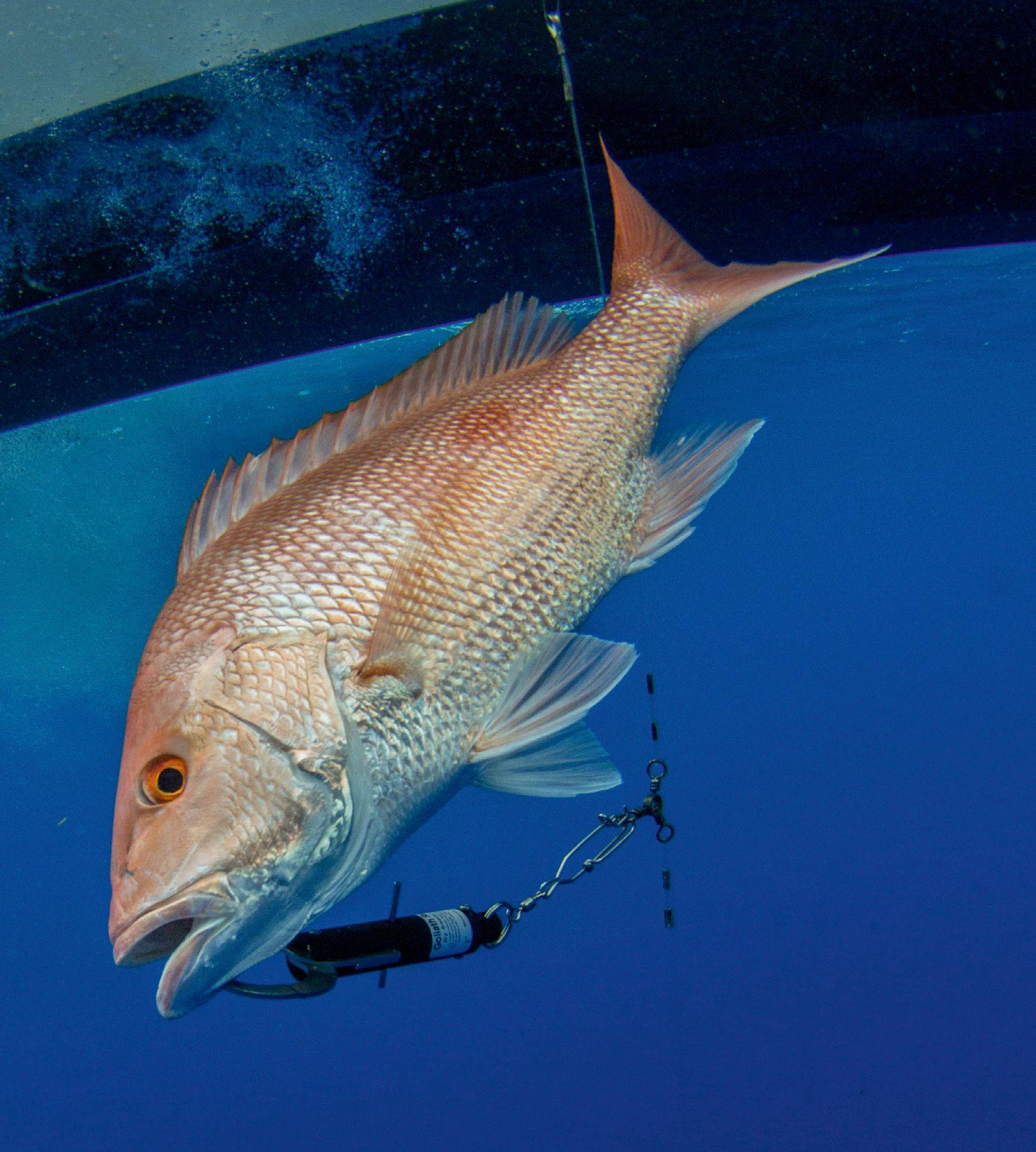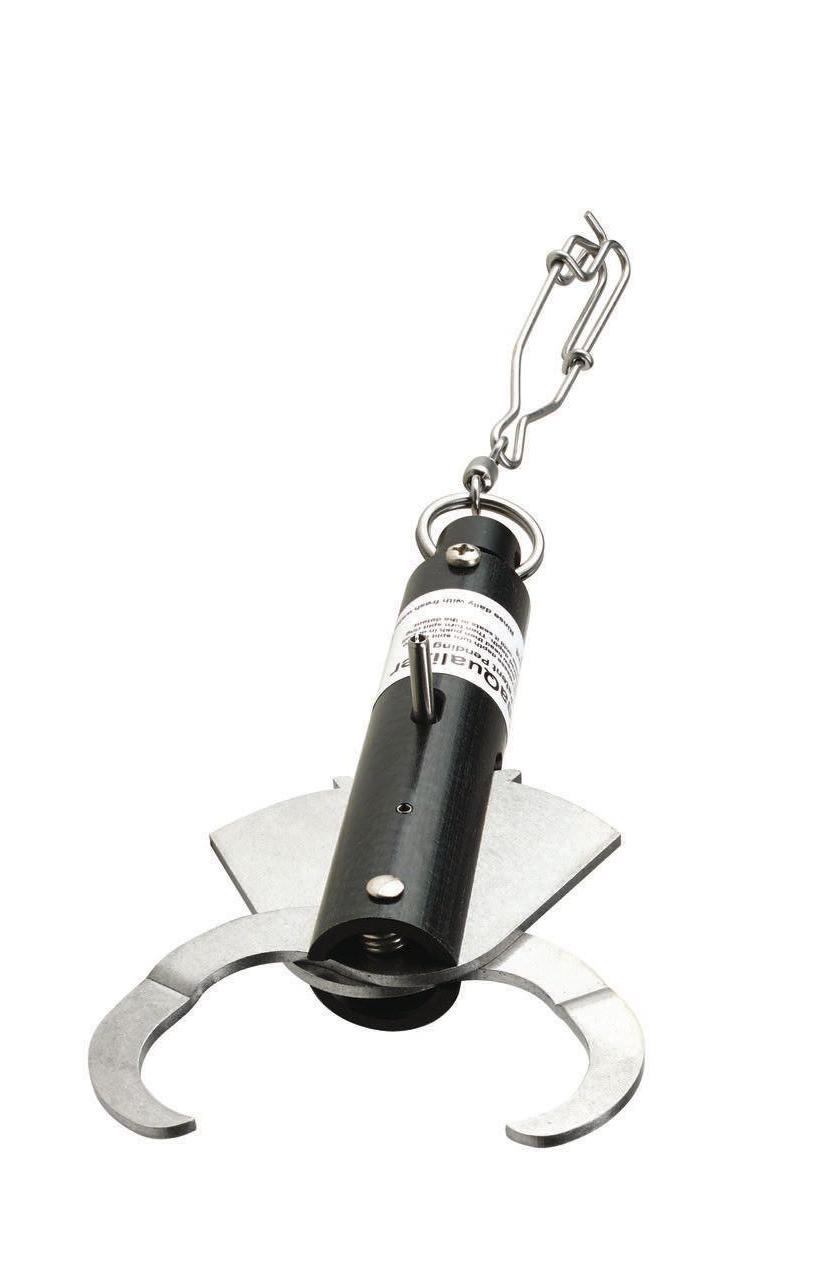
3 minute read
DESCENDING DEVICES
A red snapper being delivered back home by a SeaQualizer.
These fish can experience barotrauma — the effects of sudden pressure change, caused by a rapid ascent from seafloor to surface on the end of a fishing line. The symptoms include bulging eyes, a distended abdomen, and lack of equilibrium when returned to the water. Some fish die as a direct result of the injury caused by the barotrauma, while others make easy pickings for predators lurking near the surface. Regardless of the cause, mortality of these released fish is contrary to conservation and a source of frustration to anglers and resource managers alike.
For the past several decades, anglers have been advised to treat barotrauma in a fish by puncturing its air bladder. Specially designed tools, essentially a hollow needle in a handle, facilitated venting, as this practice is called. There’s no doubt venting has been beneficial, but there is a better way. Several devices are now available that allow the angler to return fish to depth, alleviating the effects of barotrauma and bypassing some of those hungry mouths. Collectively known as descending devices, these devices range from very simple to highly sophisticated and are proven to increase survival in deep-water species. On the simple end of the scale is the Shelton Fish Descender, originally developed for West Coast rockfish but useful for smaller reef fish found in the Southeast and Caribbean. Retailing for a modest $6, it’s an S-shaped wire hook clip that connects into the fishing line, allowing fish to be released with the same tackle used for catching. The fish to be released is connected to the device by passing the sharpened point through that fish’s lower lip and lowering it into the water with the point of the device in a downward position. A weight rigged above or below the device carries the fish down to the desired depth where a quick upward motion of the rod tip reverses the position of the device, affecting the release.
On the other end of the sophistication scale is the SeaQualizer device. A technological marvel, it’s a small, metal cylinder with a line clip on one end and set of springloaded jaws on the other, which grip the lower lip of the fish to be released. The device is attached to a weighted line on a rod and reel, handline, or downrigger. The magic of the device happens within the cylinder, where an adjustable pressure sensor allows fish to be released at specified depths. Once the device and fish reach the target depth, the jaws open, allowing the fish to swim free. The SeaQualizer comes in three models: the original with release settings for depths of 50, 100 and 150 feet; the shallow or Striper model for 30, 50 and 70 feet; and a deep-water device for deployments at 100, 200 and 300 feet. Each model retails for $60.
Descending devices hold great promise to improve reef-fish survival but their use is voluntary at this point. Researchers are working with different designs in various depth profiles and geographic areas to quantify the benefits of the devices. Once that happens, fishery managers will be able to determine if mandatory use is warranted.
Meanwhile, the marine industry is doing its part thanks to Martin Peters, manager of Government Relations at Yamaha Marine Group, who contacted the Georgia Department of Natural Resources seeking opportunities for his company to improve marine fisheries management in the South Atlantic region. Georgia DNR staff asked for input from the leadership of state marine fish management agencies from North Carolina to Florida, and a decision was made to create a FishSmart Red Snapper Conservation Project. Thanks to the support of Yamaha Marine Group, NOAA Fisheries, American Sportfishing Association and other partners, anglers and guides in the South Atlantic region are receiving free descending devices along with information about best practices for handling fish. Participants will be surveyed about their experiences, and the results will help resource managers understand and address any barriers to the use of descending devices.

Taking a few extra minutes to release a fish with a descending device may seem inconvenient and the cost of more sophisticated devices may be off putting. However, we owe each fish we release the best chance of survival. After all, they are the future of fishing.










